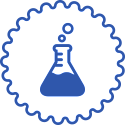
Keywords
Bacteria, Quality, Contaminants, Identification, Genes, DNA, PCR, qPCR
Description
There are thousands of different yeast strains and they all have specific metabolism that leads to different flavors and aroma or different fermentation characteristics. It is important to be able to identify the right strain and make sure it will not change overtime. This lecture presents a crash course about genetics and DNA fundamentals before describing how various techniques can be useful to maintain strain integrity, but also for the detection and identification of contaminants.
Learning Objectives
- Compare and contrast ale and lager yeasts
- Explain the relationship between yeast genetics and fermentation performance
- Describe how to identify strains using genetic techniques
- Describe the advantages of molecular techniques for identification of contaminants in beer
- Explain genetic methods for the identification of wild yeast and bacteria

Lecture developed by
Dave Bertrand
Dave is a graduate in Biology/Molecular Biology from Laval University in Quebec City.
He joined Lallemand in 2003 as a research assistant in the propagation R&D lab in Montreal. Later that year he was involved in the transfer of the Genetic ID lab to Montreal. In 2007 he was promoted as lab manager and, with the help of a small but very dedicated team, takes care of the various genetic identification requests for the Lallemand group.
Read moreEnroll options
Better experience on tablet or higher screen size.
Need guidance? Leave a message and we'll get back to you.